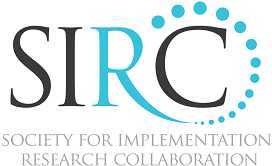Parent Daily Report, a quick, cheap, valid, repeated measure of child behavioral adjustment used in EBP scale-ups
Friday 10:30 – 1:45 Breakout A2
Presentor: Patricia Chamberlain
Patricia Chamberlain, Oregon Social Learning Center; John B. Reid, Oregon Social Learning Center; Lisa Saldana, Oregon Social Learning Center
The Parent Daily Report (PDR) is a 34 item checklist that was originally developed to augment expensive and intensive home-based observations of parent child interactions. PDR was added to measure low base-rate events and covert behaviors (e.g., stealing). Subsequently, PDR was expanded to cover routine and severe internalizing and externalizing behaviors. PDR scores have been found to predict critical events such as child welfare placement disruptions, runaways, school suspensions, and arrests. The PDR is obtained via telephone during a 5 minute call that asks the respondent to report on the occurrence/non-occurrence of child behavior during only the past 24 hours and to report on the level of parental stress associated with the occurrence of specific problems. . It has been collected daily or once per week and has been used as a mechanism for tailoring interventions for individual relevance, for use in repeated outcome monitoring, as a pre/post/follow-up outcome measure in research studies and more recently in system-wide scale-ups of EBPs. Adherence to PDR protocols as it relates to observation-based ratings of model fidelity of intervention sessions will be examined for over 1500 children in foster care served by 5 private agencies in the context of a foster care system reform effort in New York City.
Conceptualizing and Measuring External Context in Implementation Science: Studying the Impacts of Regulatory, Fiscal, Technological and Social Change
Friday 10:30 – 1:45 Breakout A2
Presentor: Alison Hamilton
Alison Hamilton, UCLA & VA Greater Los Angeles (GLA) Healthcare System; Brian Mittman, VA GLA & Kaiser; Alicia Eccles, UCLA; Craig Hutchinson, UCLA; Gail Wyatt, UCLA
Implementation science has focused extensively on internal context, conceptualizing and measuring factors such as features of organizational settings. The theoretical literature highlights the importance of external context, but little has been done to measure external context and examine its impact on implementation. We identified several features of external context influencing the progress of an NIMH-funded hybrid effectiveness-implementation multisite study of an HIV/AIDS prevention program. This abstract presents a preliminary taxonomy of key dimensions of external context and describes the role of this taxonomy in augmenting and elaborating existing frameworks for context in implementation science. To develop this taxonomy, we reviewed notes from weekly interdisciplinary calls and data from interviews with agency leaders to identify the key features of external context reported to be important substantial influences on project progress. Key dimensions of external context include regulatory factors (e.g., changing regulations), fiscal factors (e.g., changes in public health financing), technological change, and social and economic change and pressures. Growth in the pace and magnitude of changes in the external environment and context of healthcare delivery and public health agencies highlight the need for richer, more complete conceptualization and measurement of these factors in implementation science.
WrapSTAR: An Efficient, Yet Comprehensive Approach to Wraparound Implementation Evaluation
Friday 10:30 – 1:45 Breakout A2
Presentor: Jennifer Schurer Coldiron
Jennifer Schurer Coldiron, University of Washington, Wraparound Evaluation and Research Team; Eric J. Bruns, University of Washington, Wraparound Evaluation and Research Team; Alyssa N. Hook, University of Washington, Wraparound Evaluation and Research Team
Wraparound is a well-established model for care coordination for youth with complex emotional and behavioral needs and their families. While several measures of fidelity and outcomes exist, they have been used sporadically by the field and have, until now, been used in isolation, providing little in the way of comprehensive information for improvement. This talk will describe the development of the Wraparound Structured Assessment and Review (WrapSTAR), an intensive review process that builds off of major research-based implementation frameworks, and synthesizes information about a Wraparound provider organization in four domains: outcomes, fidelity, implementation, and system support. An initial pilot indicates that the process is feasible, with minimal burden to provider personnel, and yields actionable information for stakeholders that can be used to develop targeted quality improvement efforts. Recent experiences taking the protocol to scale in one state and teaching another state to conduct the review independently provide further evidence of the approach’s utility and efficiency. Next steps and wider applications will be discussed.
